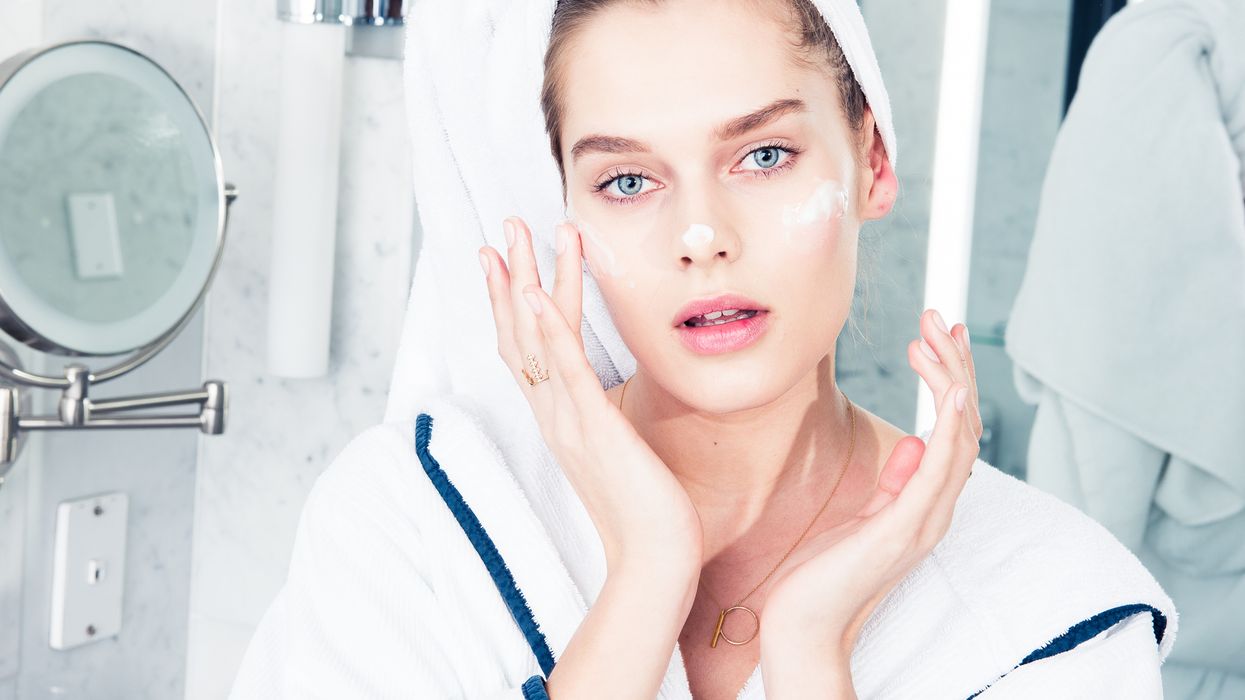Is Your Skin Lacking Moisture, or Hydration? Yes, There’s a Difference
Oh, and dry and dehydrated aren't the same thing, either.
11 August, 2020
Skin
10 November, 2021
Walk down any beauty aisle or scroll through your favorite Instagram accounts, and you’ll inevitably find these two words: hydration and moisture. Many people, and sometimes even brands, use these two words interchangeably without understanding their proper definitions within skin care. You’ve likely experienced this whenever someone raves about their new and favorite moisturizing serum or a hydrating face cream.
Now, we are not here today to argue the semantics of the advertising world, per se, but rather reveal the truth behind hydration and moisture in relation to our skin-care products. To help us better understand the difference between these two terms, we consulted board-certified dermatologist Annie Gonzalez, MD, FAAD, of Riverchase Dermatology, and third-generation aesthetician and CEO and co-founder of Glowbar Rachel Liverman for some insight.
Now, we are not here today to argue the semantics of the advertising world, per se, but rather reveal the truth behind hydration and moisture in relation to our skin-care products. To help us better understand the difference between these two terms, we consulted board-certified dermatologist Annie Gonzalez, MD, FAAD, of Riverchase Dermatology, and third-generation aesthetician and CEO and co-founder of Glowbar Rachel Liverman for some insight.
Hydration vs. Moisture
Now, why is it wrong to call a face oil hydrating? It’s crucial to first understand the difference between a humectant and an occlusive ingredient, as well as how they are used in your various products. Dr. Gonzalez explains, “Humectants, which hydrate the skin, pull water into the [skin] from within the body or the environment. [Occlusives, which moisturize the skin,] seal in water and help shore up the skin’s barrier functions.” The word hydration indicates that an ingredient is a humectant, whereas moisture suggests that an ingredient is occlusive.
Although they are different, imagine that these two types of products are working as a team in order to provide you with soft, supple, protected skin. Products such as essence, toner, and rather watery serums fall under the category of a hydrating humectant, whereas emollient serums, face oils, and, of course, creamy moisturizers fall under the category of a moisturizing occlusive.
Dry vs. Dehydrated
How does one determine whether they need hydration or moisture from their skin-care products? In short, we all need both types of products to ensure that the skin’s lipid barrier is functioning properly. Says Liverman, “If your skin is dry, it means it lacks oil, so the solution would be a moisturizer; if your skin is dehydrated, meaning it lacks water, you need a hydrator.”
A good way to tell whether your skin is dry or dehydrated is to look at its texture. Dehydrated skin tends to look dull and feel tight, whereas dry skin is often flaky, patchy, and sometimes red. Liverman explains, “If a client’s skin is presenting as dry (lacking oil), we choose a moisturizer with more humectants and emollients. If a client's skin shows signs of dehydration, we choose serums with hyaluronic acid, niacinamide, and ceramides.” Whether you are dry or dehydrated, our experts recommend using both humectants and occlusives and adjusting the hydration-to-moisture ratios to fit your skin-care needs.
External Factors
Environmental stressors can also indicate whether you need more hydration or moisture in your routine. Our environment can provide us with a fair amount of hydration; just think of the difference in your skin during the warm and humid summer months compared to the dry and freezing winter. Says Dr. Gonzalez, “For people living in humid weather, humectants are great because they pull the moisture from the environment into the skin cells. But if you live in dry weather, or particularly in cold months, when humidity is lost, humectants can pull too much moisture from your skin and have an adverse effect.”
In this case (dry environment or in freezing temperatures), it’s wise to use fewer humectants and more occlusives to protect the hydration in your skin from evaporating. Liverman suggests, “In the height of summer heat, most can probably get away with just a hydrating serum or a light lotion. As there is a lot of humidity in the air, we don’t need to add a lot of added moisture. In the winter, when the air is very dry and you add dry [artificial] heat to that, our skin will absolutely need extra moisture on top of hydrating serums.”
When in Doubt, Layer Up
Both experts agree that the best way to reap the benefits of both hydrating and moisturizing ingredients is through layering. It’s important to apply hydrating ingredients—such as hyaluronic acid, niacinamide, sodium hyaluronate, ceramides, glycerin, alpha hydroxy acids (AHA), amino acids, and peptides—first to provide the skin with a surge of water. After that, apply a moisturizing ingredient, such as peony extract, seed oils, shea butter, cocoa butter, ceramides, and dimethicone (among others) to seal the hydration into the skin.
Liverman explains that technique is key when applying these products, suggesting that you “work each product into the skin for 30 seconds then wait a minute or so before applying a new product. This will allow your skin to really absorb each product and, in result, reap the benefits.” Consider yourself moisturized, hydrated, and ready for anything.
Photo: Shot on site at 6 Columbus, a Sixty Hotel; On Solveig: Rings, Baker & Black, Azlee; Hair, Angela Soto; Makeup, Andriani.
Want more stories like this?
This Is Your Skin on ‘Shrooms
Cactus: The Plant That Belongs in Your Skin-Care Routine
Hyaluronic Acid Might Not Be the Most Hydrating Skin-Care Ingredient After All